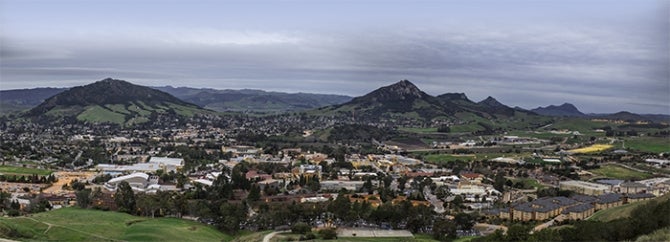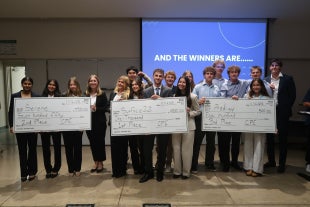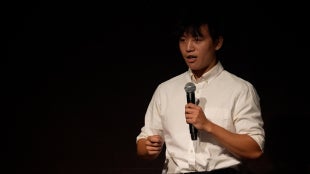Cal Poly Achieves Important Enrollment Milestone in Effort Toward Hispanic Serving Institution Designation

Contact: Matt Lazier
805-756-7109; mlazier@calpoly.edumlazier@calpoly.edu
Cal Poly Achieves Important Enrollment Milestone in Effort Toward Hispanic Serving Institution Designation Hispanic/Latino enrollment hits 25% for the first time, as the university’s incoming class is again the most diverse in its history; numbers of transfer students and local students accepted also rise
SAN LUIS OBISPO, Calif. — Cal Poly has reached a significant milestone in its quest for designation as a Hispanic Serving Institution, as Fall 2024 enrollment numbers show the university’s Hispanic/Latino student enrollment at the required 25% this year for the first time ever.
This achievement brings Cal Poly one step closer to official HSI designation, which requires maintaining this 25% threshold for two consecutive years before applying. Achieving HSI status will unlock access to resources and grants that will help deepen support systems for Latinx/e students and further strengthen the university’s goal of fostering an inclusive campus culture.
Latinx/e students make up approximately 29% of the incoming undergraduate class.
This year’s enrollment numbers show further overall growth and advancement in the university’s effort to attract a more diverse student body that better reflects the demographics of California — an effort that has seen continued, marked success over the last decade. Cal Poly’s official enrollment figures for the year are determined in the Fall Census, which is taken in mid-October.
Hispanic/Latino enrollment has seen 87% growth in this population over the last decade, compared to 13% overall enrollment growth since 2014. Hispanic and Latino students accounted for roughly 15% of the student population in 2014. As well, more Hispanic/Latino students are accepting the university’s offer of admissions, with a yield rate .2% higher than the university average this year compared to 6% lower than the average in 2014.
“We are excited and proud to have achieved this important milestone on our journey toward designation as an HSI — which in itself is an important marker toward opening our doors more widely to underrepresented, first-generation, lower-income, and other students who in years past may not have had the option of attending Cal Poly,” said President Jeffrey D. Armstrong.
“This progress speaks to the hard work and dedication of many of our staff, faculty and administrators. However, this effort is far from finished. We need to grow, and we need to continue to attract and enroll a more diverse student body. The ongoing demand for admission to Cal Poly coupled with governor’s call for more access to the CSU statewide means we have a major role to play in meeting California’s higher education needs and additional work to do in providing even more students with the opportunity to benefit from our Learn by Doing education.”
Several strategies have played a role in the university’s success in recruiting more Hispanic/Latino students, including increased efforts in recruiting local students, significant increases in financial aid and scholarships, and a focus on actively recruiting top scholars (including National Merit and National Hispanic scholars). Of the students who accepted the university’s admissions offer this year, 145 are designated as National Hispanic Scholars, meaning Cal Poly has become a top choice for the nation’s academically achieving Hispanic/Latino students.
The steady rise in Hispanic/Latino enrollment is indicative of the overall success Cal Poly is seeing in its effort to diversify its student body, within Proposition 209’s limitations on race- and ethnicity-based enrollment in California.
“This milestone reflects our commitment to serving every student who joins our community and ensuring they have the support needed to achieve their goals,” said Cynthia Jackson-Elmoore, Cal Poly’s provost and executive vice president for academic affairs. “It marks an important step in our ongoing efforts toward better serving the Latinx/e community and building an environment where every student can thrive.”
This is the second year in Cal Poly’s history that no single ethnic student group makes up more than 50% of the total enrollment. In addition, underrepresented minority students make up 30% of the university’s incoming undergraduate class this fall, compared to 18% 10 years ago. For transfer students, the number is 44% this fall, compared to 30% in 2014.
Financial aid plays an important role in improving access to additional lower-income and first-generation students. This year, increased revenues from Cal Poly’s College-Based Fee are providing more than $14.4 million in aid to about 5,800 students — an increase of $7.6 million and nearly 3,000 students year-over-year. This year, the Cal Poly Scholars program will have 2,687 new and continuing participants. As well, University Housing is providing over $4.6 million to 2,300 low-income students to help offset housing costs.
Meanwhile, as students across the country faced significant challenges in working through the new FAFSA, Cal Poly’s continued efforts to provide opportunities for Pell Grant-eligible students yielded 20% growth over the last year in the number of Pell students being served — up to 5,196 and a total of $31 million, from 4,339 and $23 million. That brings the university’s percentage of Pell-eligible students to 23% of total enrollment, up from 19% in 2023.
Cal Poly also has seen growth in enrollment of transfer students and local students — important metrics in the university’s role as a steward of place. This year, the university has seen a 12.5% increase in the incoming transfer student class. As well, local students are two times more likely to gain admission than non-local students (60% admission rate vs. 30%), and the university's incoming class will include more than 800 students from the local area — an increase of more than 25% versus last year.
“Cal Poly and the Central Coast depend upon one another — and it is our obligation to find ways to provide more and more high-achieving Central Coast residents with the opportunity to earn a Cal Poly degree,” said Terrance Harris, Cal Poly’s vice president for Strategic Enrollment Management. “We are already making great strides, including the recent launch of our new 2+2 programs for local community college students, and we look forward to working with our community partners to find innovative ways to support our local students and local economy.”
This progress is a driver in the HSI effort. Both this year and last, 51% of Cal Poly’s new local student enrollment was Hispanic/Latino. And 23% of the university's new student Hispanic/Latino enrollment came in the form of local students.
“It is thrilling to see this tangible progress in making a Cal Poly education possible for more and more Californians,” said Denise Isom, Cal Poly’s interim vice president for University Diversity, Equity and Inclusion. “As well, we achieved the 25% Hispanic/Latino enrollment a year earlier than we anticipated — a sign that we are intentionally building momentum as we continue this important work toward fulfilling Cal Poly’s mission.”
In addition to the 25 percent enrollment milestone, Cal Poly continues to make significant progress on its journey toward ‘servingness’ a commitment to holistically supporting Latinx/e students through enriching academic and cultural experiences:
- The university recently launched an HSI student advisory board, dedicated to advancing Dr. Gina Garcia’s “Servingness” framework, a transformative approach that places student experiences at the forefront of Cal Poly’s community development.
- Cal Poly’s HSI mini grant program awarded funding to 16 projects that embodied “Servingness” in practice, totaling $130,000 in support
- The DEI faculty cluster hire program launched in the College of Liberal Arts in 2017 and is expanding universitywide in 2024, with an increased focus on HSI curricular programs and Black student success.
- Six HSI-focused BEACoN projects were funded, researched and presented at the 2024 BEACoN Research Symposium.
- Approximately 350 high school students participated in the United by Excellence’s Latinx Heritage Celebración on Oct. 11.
Additionally, Cal Poly's Office of University Diversity and Inclusion (OUDI) will host “¡Adelante!: Pathway to Becoming an HSI,” its second Hispanic-Serving Institution (HSI) Symposium on Wednesday, Oct. 30. With a keynote provided by Javier Zamora, this immersive day of updates, workshops, resource fair, and more will explore the intentional journey toward becoming an HSI-designated university and the integral role it plays in Cal Poly’s mission.
¡Adelante! that translates to "forward" in Spanish, encapsulates the spirit of this symposium, which aims to honor the past, celebrate the present, and envision the university’s future as Cal Poly makes strides towards becoming an HSI that holistically serves and empowers the Latinx/e community.
The event is free to attend but registration is required. Visit diversity.calpoly.edu/adelante to register and find the full schedule of events.


